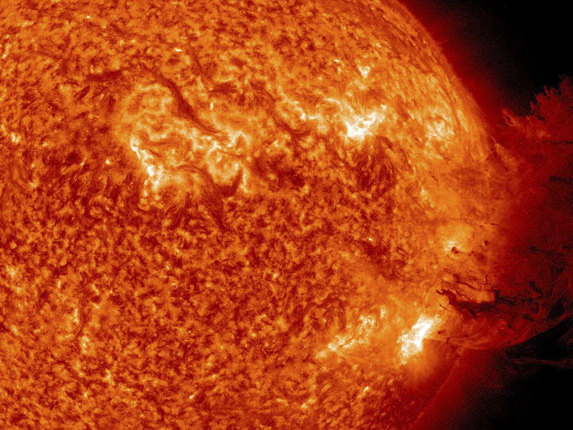Revealed by analysis of chemicals preserved in Greenland ice, the storm around 2,600 years ago was 10 times stronger than anything detected in 70 years of modern measurements.
While the people of 660 BC had little to fear, such episodes would be of grave concern today given their capacity to destroy satellites, communications and electrical systems.
Solar storms are triggered by flares of cosmic particles streaming towards Earth, bombarding its magnetic field and interfering with various technologies.
Although just the third storm of its kind identified so far, the scientists said this was more evidence these major events had been underestimated, and must be urgently defended against.
“We don’t know the statistics of how often these events occur – but what I would say is that we now know it probably happens on a regular basis,” Dr Raimund Muscheler from Lund University told The Independent.
“If that solar storm had occurred today, it could have had severe effects on our high-tech society.”
Relatively minor solar storms that have struck in recent years have caused extensive power cuts in parts of Canada and Sweden.
Previously, scientists have warned about the devastation that could result from larger storms striking the planet, but it has been difficult to guess when they might strike.
To find clues about the regularity of such events, Dr Muscheler and his colleagues took polar ice samples and tested them for molecules formed by solar particles entering the atmosphere – which spiked in the ice dating back to 660BC.
Considering previous events that have been identified from the years 775 and 994, the scientists concluded these outbursts are probably a normal part of the Sun’s cycle.
To those alive at the time of the last major events, it is likely the only observable effect would have been comparably pleasant as particles from the Sun blasted into the planet.
“People would have suddenly observed northern lights in very low latitudes,” said Dr Muscheler.
However, given their capacity for destruction, the scientists said this threat must be taken seriously, with adaptation strategies considered both for land and space-based systems.
The new results were published in the journal Proceedings of the National Academy of Sciences.
The Independent
More about: solarstorm
















































